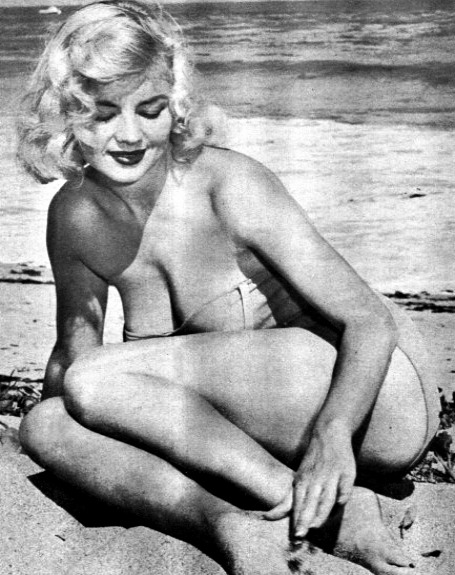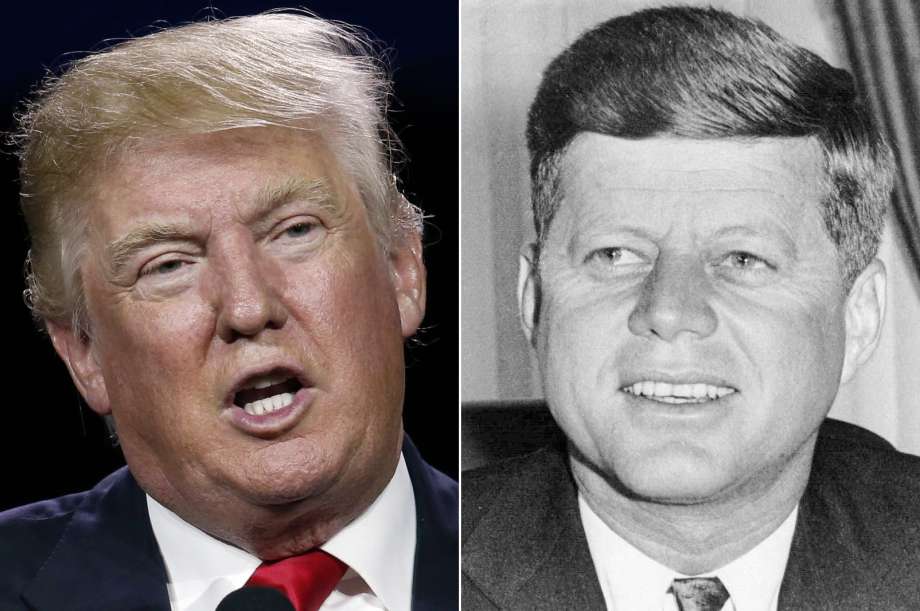
FEATURE image: “Galaxy Carhop” by JackAZ Photo is marked with CC BY-NC-SA 2.0.
By John P. Walsh
Dane Arden (1934-2013) was an international magazine model in the 1950’s and 1960’s. She was born Elsa Sørensen on March 25, 1934 in Copenhagen, Denmark. Following her win of the title of Miss Denmark as a teenager she went to live with her family in Vancouver, Canada.
Her debut in the September 1956 issue of Playboy magazine gave her much publicity. Elsa Sørensen went on to appear multiple times in that American men’s entertainment/lifestyle publication. As Dane Arden, she modeled for other magazines such as the U.S. versions of Australia’s Adam magazine and Milan, Italy’s illustrated weekly news magazine, Tempo, among others.
Elsa moved to Los Angeles, California and married twice. She died at 79 years old on April 18, 2013 from complications following a bicycle accident in Vero Beach, Florida.


In one favorite set of non-nude color photographs of Dane Arden—this from 1956, the same time as her Playboy shoot— the 22-year-old Danish model expresses her beauty, physical dynamism and engaging personality as she poses as a carhop bringing fast food to people in their cars at drive-in restaurants.
Working carhops first appeared in the early 1920’s along expanding and popular interstate roads. In the 1920’s the carhops were mostly boys and men. During and after World War II, the service role was increasingly performed by women.
By the mid1950’s, abundant drive-ins had to compete for customers in fast-moving automobiles and so carhop uniforms had to be eye catching. Uniforms on busy roads would often be creatively thematic with military, airline, space age, and cheerleader uniforms predominating.
The 1956 color photograph of Dane Arden as a carhop (or waitress) is by Los Angeles-based glamour photographer Peter Gowland (1916-2010), the son of a Hollywood film actor and actress. In a photography career spanning over six decades and characterized by technical innovation, Gowland’s glamour and celebrity photography appeared on over one thousand magazine covers.
Dane Arden is an especially alluring carhop who wears a skimpy plaid-patterned matching fringed halter top and short shorts with fringed apron cut to size. Wearing the typical flat shoes and head gear worn by many female car hops at the time, Dane Arden proffers the perfect uniform to greet her customers with their lime-green cups of hot coffee.

Former Miss Denmark Elsa Sørensen, known professionally as Dane Arden, was a popular glamour model in the mid-1950’s and early 1960’s. Dane Arden posed in American men’s entertainment and lifestyle publications in the nude and non-nude.



Dane Arden displayed the blonde bombshell image that became very popular in mid-20th century American culture. She posed both nude and non-nude for pop-culture magazines in the 1950’s and 1960’s.








Dane Arden good-humoredly believed there was no “nuttier business” to be in than posing for cheesecake pictures in these popular magazines. In her magazine spreads, Dane Arden shared with its mainly male readership that it took her longer to achieve an attractive “disheveled look” in a swimsuit for a beach shoot than if she was preparing for a fancy dress-up costume ball.
There is a short color documentary filmed in the mid 1970’s at the legendary Keller’s Drive-In in Dallas, Texas. Though shot at the end of an era for drive-in car hops along America’s open roads since the 1920’s, the film makes it easier to imagine the pace and purpose of Dane Arden’s 1956 glamour photograph of a female carhop at a popular mid20th century American roadside eatery.
The documentary about carhops and American Graffiti-style drive-in culture which once littered America’s roads coast to coast–and Dane Arden’s glamour photograph dressed as a car hop–placed the model’s photographic career smack dab in the middle of mainstream American culture.
Keller’s Drive-In which is featured in the film is a classic spot to enjoy a no-frills burger and cold beer. Its founder Jack Keller once worked at Kirby’s Pig Stand which became the nation’s first drive-in restaurant empire. Keller passed away in 2016 at 88 years old.
Keller’s original location opened in 1950 and closed in 2000. The oldest restaurant in the American chain today is the one that opened in 1955 on Northwest Highway in Dallas. There are two other Keller’s restaurants in Dallas.

In addition to Playboy, Elsa Sørensen appeared in the U.S. version of Adam magazine using the name Dane Arden which she used for all her non-Playboy modeling assignments.

Sources:
Dane Arden biography – Lentz III, Harris M., Obituaries in the Performing Arts, McFarland, 2013 and http://www.pulpinternational.com/pulp/entry/1960-photo-of-Danish-model-Elsa-Sorensen-aka-Dane-Arden.html (retrieved Aug. 28, 2017); women carhops – Koutsky, Kathryn Strand, Koutsky, Linda, and Ostman, Eleanor, Minnesota Eats Out: An Illustrated History, Minnesota Historical Society Press, 2003, p. 134; carhops history – http://www.history.com/this-day-in-history/last-day-for-texas-celebrated-drive-in-pig-stands (retrieved Aug. 28, 2017); story of Keller’s – http://res.dallasnews.com/interactives/kellers/ published on March 18, 2015 and http://www.dallasobserver.com/restaurants/the-man-who-brought-us-one-of-dallas-greatest-burgers-has-died-8271874 (retrieved Aug. 28, 2017).










